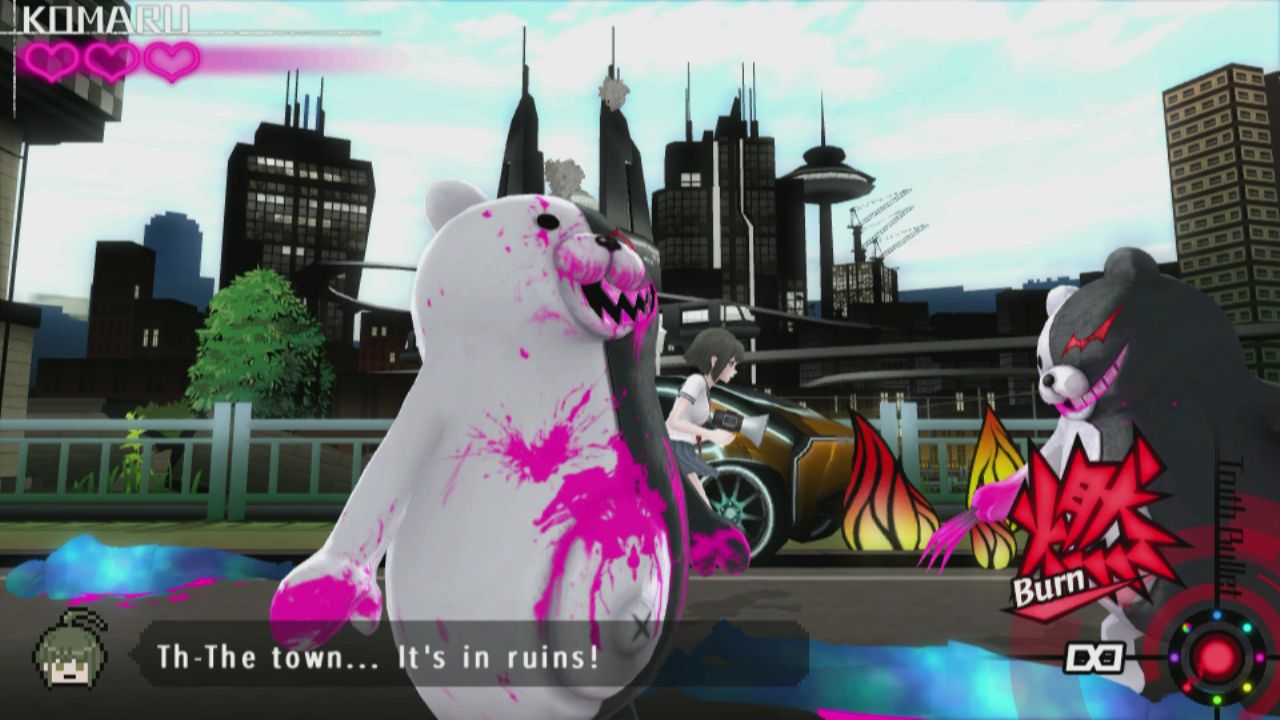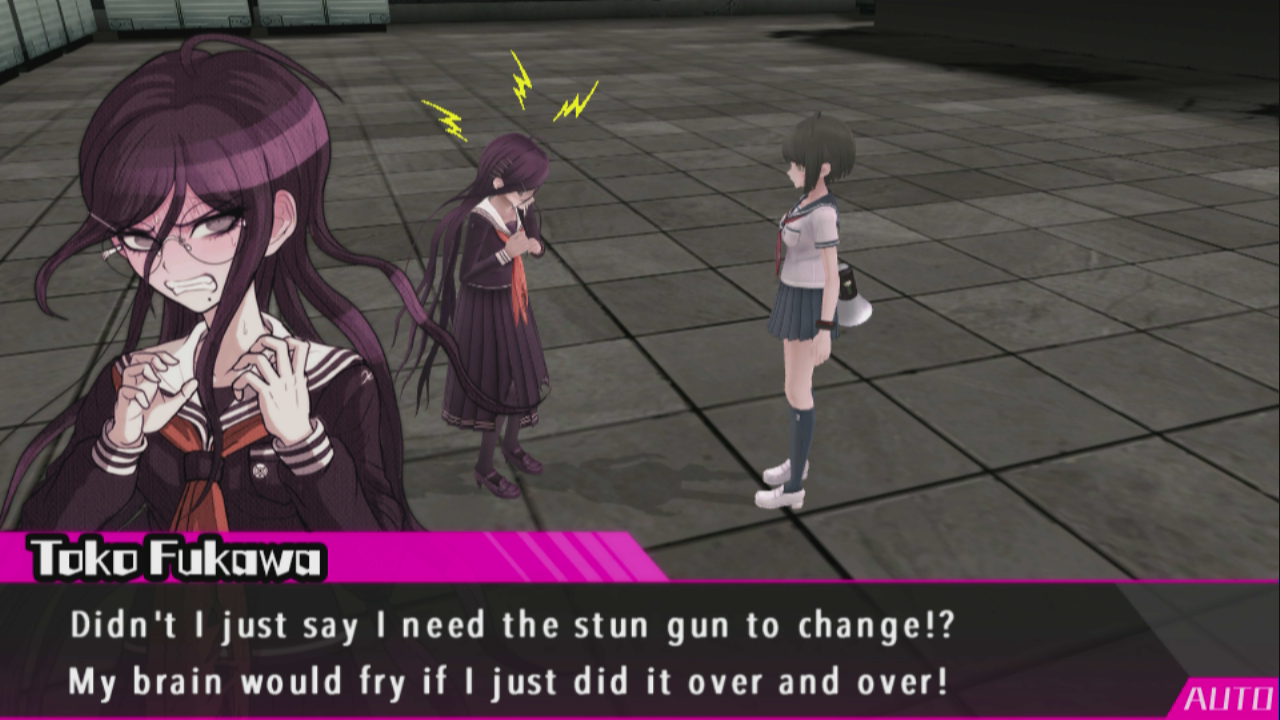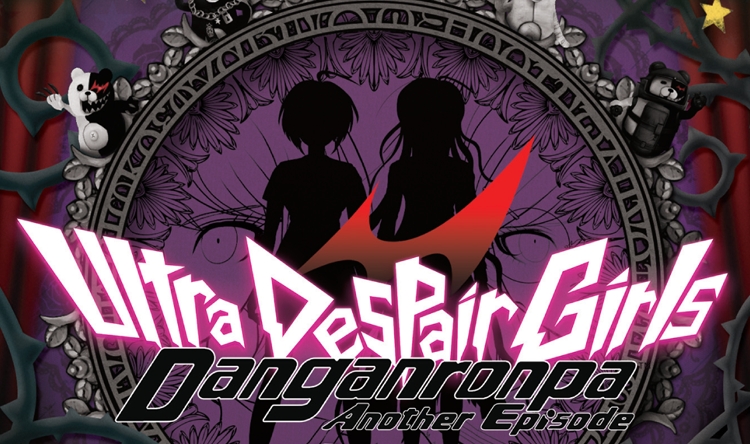As the latest entry into its ongoing saga, Danganronpa Another Episode: Ultra Despair Girls shelves away all of the trials, relationship building and evidence collecting from the main flagship titles and replaces them with an action-packed third person shooter (TPS) spinoff that focuses on Makoto Naegi’s sister Komaru and Toko from the first game. Considering that the game was taking away what many considered quintessential pieces of the series, many fans including myself, were worried that something would be lost in developing the spin-off as a TPS rather than as a full-fledged third adventure title.
Thankfully, it’s not just that. Instead, what we have here is a title that’s easily worth it of the Danganronpa series title that serves as an important link between Danganronpa 1 and 2, along with setting up future events for the upcoming third adventure title. A lot of what helped make Danganronpa popular amongst niche gamers in the first place were retained in the series’ transition into the TPS world, including tons of collectibles, stylized gore, a hint of mystery and a wonderfully intricate plot involving the pressures and challenges that children face growing up in an imperfect society.

Focused on issues such as pedophilia, living up to your parents’ expectations and being shunned for not being an ideal child, the writers of Danganronpa don’t disappoint in this iteration of the series either and it’s a refreshing change of pace to the less plot focused Gears of War and Resident Evils of the world. With heavy issues such as these, the game retains the series’ delicate balance of fan service and story as players guide Komaru through various challenges and trials through a city overrun by Monokumas. As the main antagonists of the game “the Warriors of Hope,” who strive to create a paradise for children where no adults live, offer a surprising amount of character depths as villains. This includes a main antagonist who ranks up there with the main villain of the first two games and an amazing ending sequence where everything neatly comes together, even if it feels a tad bit rushed. Although the game is split into five chapters, in addition to a prologue/epilogue, much of it feels like a “monster of the week” type formula where each episode focuses on one individual Warrior of Hope.
While Ultra Despair Girls takes a much broader approach to the series’ overall world, including the ‘tragedy’, there’s still plenty of character development for both Toko and Komaru for fans of well written stories. The only caveat, there’s tons of dialogue for a shooter which occasionally breaks the tension and intensity of the game’s overall pace. In addition, although the game is very linear in nature, often consisting of going from Point A to Point B with minimal exploration, there’s plenty of puzzles to help break up the monotony; just don’t expect anything similar to the trials and logic sequences from the main titles.

Utilizing Komaru’s hacking megaphone, players unlock more truth bullets as they level up and progress, a majority of the puzzles consist of defeating enemies in a certain way with specific ammo and conditions. An example would be to defeat all the enemies using only one bullet or defeat them all using electricity. There’s also an investigation style bullet, called ‘detect’, where players try to find clues to solve riddles, but there were only a handful of these sequences throughout. The truth bullets themselves can be upgraded through purchases at the game’s shop, which allows you to upgrade Toko’s attacks as well.
For those of you familiar with Danganronpa: Trigger Happy Havoc, Toko can transform into Genocide Jill using the power of a stun gun, and functions as the game’s melee attacker. As she attacks with scissors, a lot of her attacks consist of combos and charging up along with a “fever” attack which allows her to defeat multiple enemies at a time. As with the Truth Bullets however, there is a limit to how long you can use Jill for. Although I personally finished the game on the highest difficulty, which for those familiar with shooters won’t find as a challenge, the lower difficulties feature more ammunition and chances to use Jill which makes it a breeze for players who want to breeze through the game just to enjoy the storyline or are new to shooters.

In addition, fans of the prior Danganronpa titles will notice a lot of returning music tracks in the game’s otherwise excellent soundtrack; providing a nice hit of nostalgia. While there are only a few new tracks, the most memorable being the theme for the Warriors of Hope and the urban-inspired background track, Masafumi Takada’s return to form blends in perfectly with the rest of the series’ memorable compositions. The sole blemish from the game’s presentation is the lack of a Japanese dub, although the English voice actors do a more than adequate job with the characters’ wide range of emotions.
All in all, Danganronpa Another Episode: Ultra Despair Girls is yet another solid entry into the series. Although it won’t win over any new fans, the game’s curious experimental decision to create something different is a general success for those who are already familiar with the series. It isn’t the most innovative shooter out there, but it doesn’t need to be. Ultra Despair Girls embraces the Danganronpa series for what it is and is a sort of love letter out there to the fans. With a wonderful cast of characters and a sharply written script, it also provides a much needed entry that ties together threads and sets up any future events. I know that I for one am really looking forward to seeing where the series goes from here.
![]()
Pros:
- Memorable cast of characters and a well written script...for a shooter
- Masafumi Takada's memorable soundtrack
- Surprisingly deals with heavy issues, centered around adolescents
Cons:
- Game is extremely easy, even on higher difficulties
- Predictable shooter, with your typical run-of-the-mill third-person shooter style gameplay
- The first four chapters/episodes utilize a "monster of the week" style

